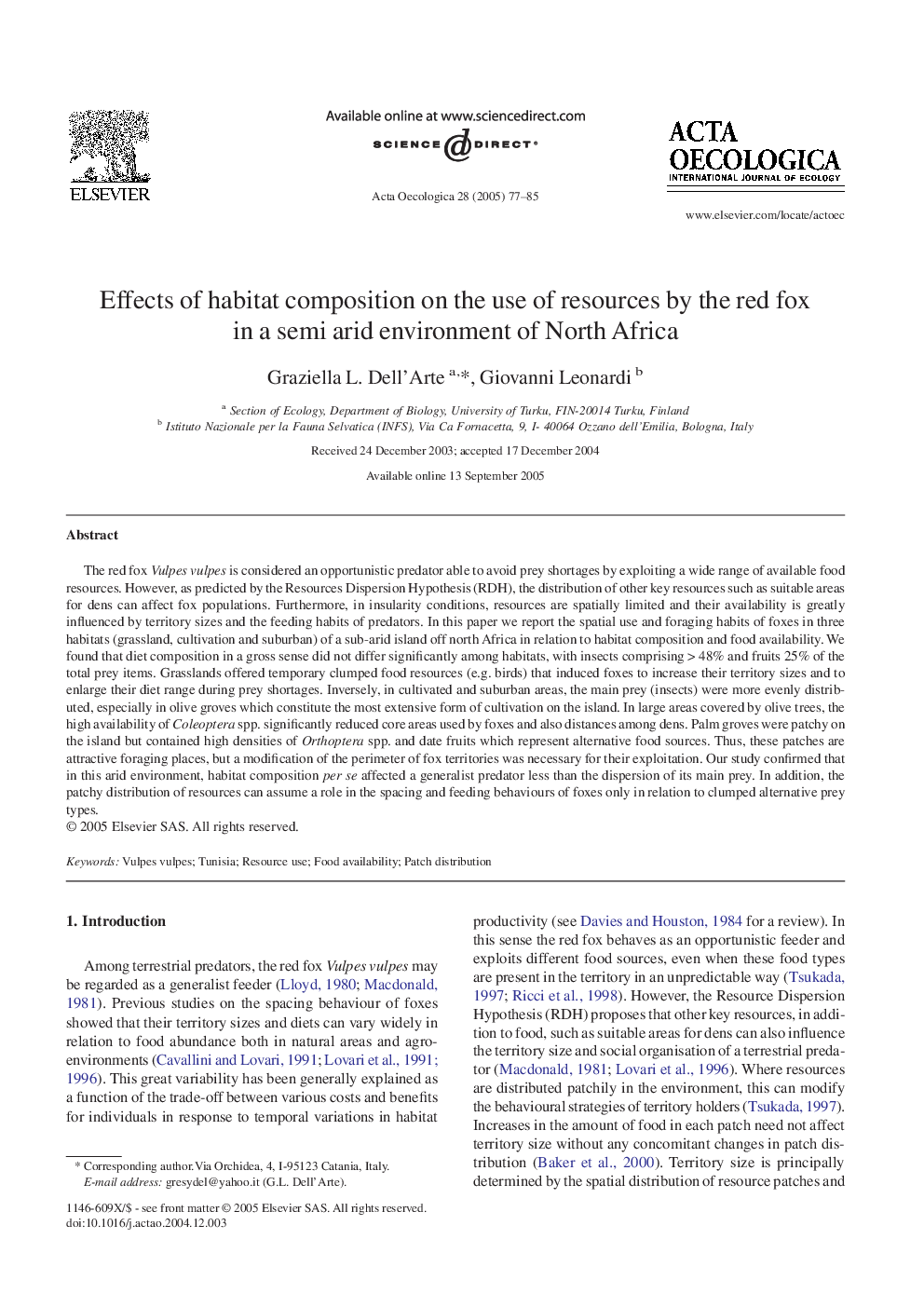| کد مقاله | کد نشریه | سال انتشار | مقاله انگلیسی | نسخه تمام متن |
|---|---|---|---|---|
| 9444995 | 1304102 | 2005 | 9 صفحه PDF | دانلود رایگان |
عنوان انگلیسی مقاله ISI
Effects of habitat composition on the use of resources by the red fox in a semi arid environment of North Africa
دانلود مقاله + سفارش ترجمه
دانلود مقاله ISI انگلیسی
رایگان برای ایرانیان
کلمات کلیدی
موضوعات مرتبط
علوم زیستی و بیوفناوری
علوم کشاورزی و بیولوژیک
بوم شناسی، تکامل، رفتار و سامانه شناسی
پیش نمایش صفحه اول مقاله

چکیده انگلیسی
The red fox Vulpes vulpes is considered an opportunistic predator able to avoid prey shortages by exploiting a wide range of available food resources. However, as predicted by the Resources Dispersion Hypothesis (RDH), the distribution of other key resources such as suitable areas for dens can affect fox populations. Furthermore, in insularity conditions, resources are spatially limited and their availability is greatly influenced by territory sizes and the feeding habits of predators. In this paper we report the spatial use and foraging habits of foxes in three habitats (grassland, cultivation and suburban) of a sub-arid island off north Africa in relation to habitat composition and food availability. We found that diet composition in a gross sense did not differ significantly among habitats, with insects comprising > 48% and fruits 25% of the total prey items. Grasslands offered temporary clumped food resources (e.g. birds) that induced foxes to increase their territory sizes and to enlarge their diet range during prey shortages. Inversely, in cultivated and suburban areas, the main prey (insects) were more evenly distributed, especially in olive groves which constitute the most extensive form of cultivation on the island. In large areas covered by olive trees, the high availability of Coleoptera spp. significantly reduced core areas used by foxes and also distances among dens. Palm groves were patchy on the island but contained high densities of Orthoptera spp. and date fruits which represent alternative food sources. Thus, these patches are attractive foraging places, but a modification of the perimeter of fox territories was necessary for their exploitation. Our study confirmed that in this arid environment, habitat composition per se affected a generalist predator less than the dispersion of its main prey. In addition, the patchy distribution of resources can assume a role in the spacing and feeding behaviours of foxes only in relation to clumped alternative prey types.
ناشر
Database: Elsevier - ScienceDirect (ساینس دایرکت)
Journal: Acta Oecologica - Volume 28, Issue 2, SeptemberâOctober 2005, Pages 77-85
Journal: Acta Oecologica - Volume 28, Issue 2, SeptemberâOctober 2005, Pages 77-85
نویسندگان
Graziella L. Dell'Arte, Giovanni Leonardi,